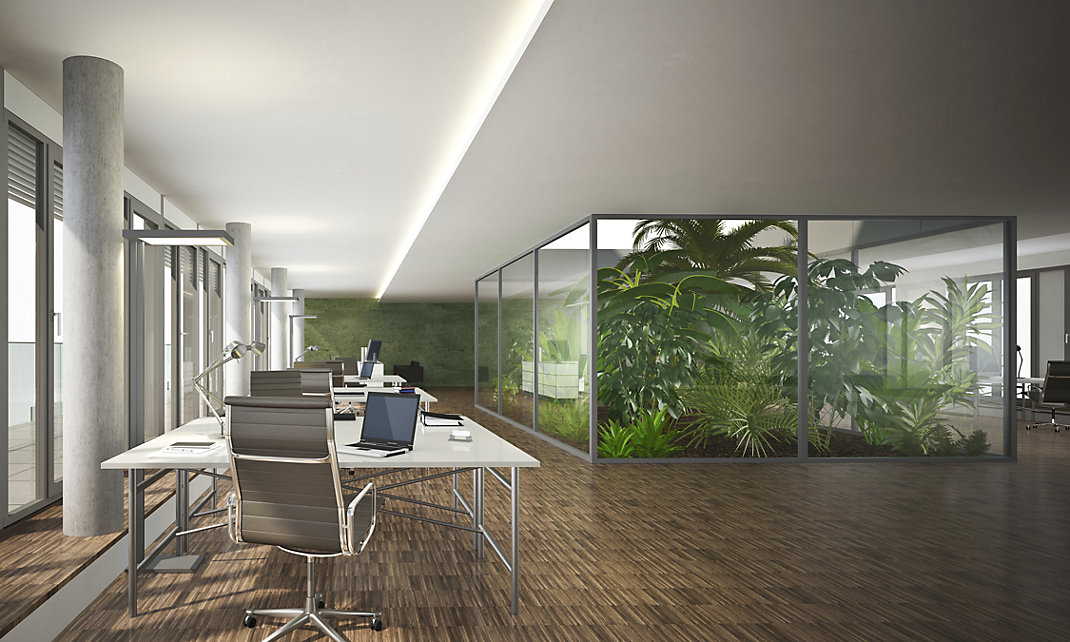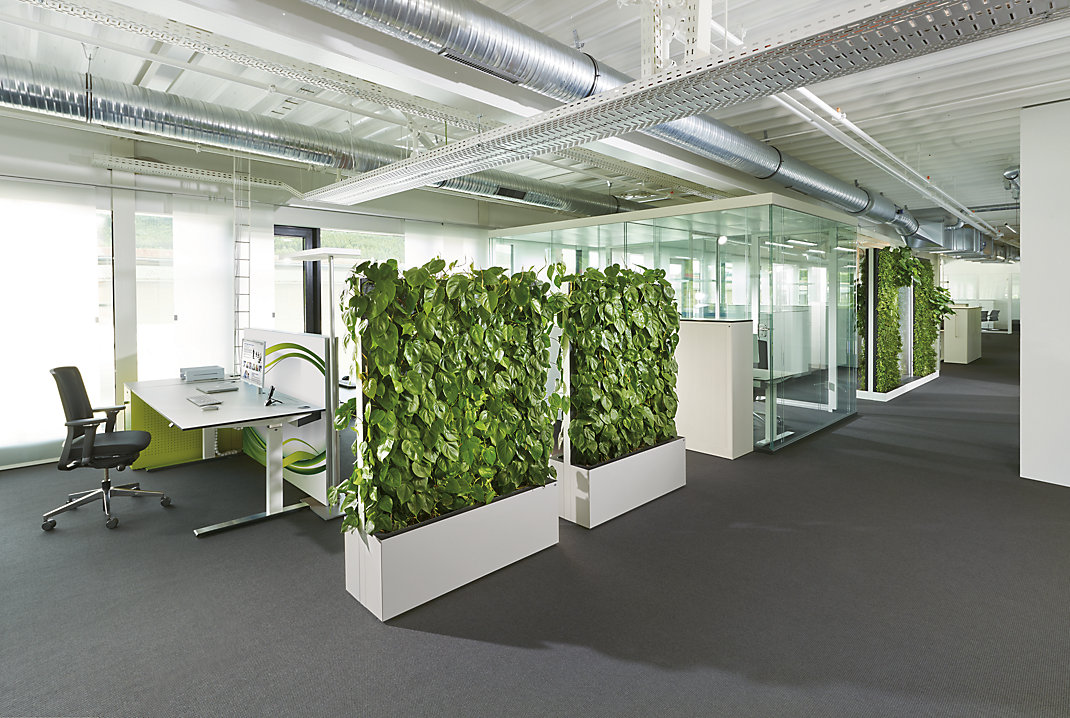
Open-plan offices – Hype or hysteria?
Short distances, more communication, more awareness, more light and more air. More and more companies are opting to set up open-plan offices to achieve just that. As the office world becomes more digital and employees are no longer tied to one and the same desk, workplaces are often being standardized. You can sit at any desk, retreat to think tanks and conference rooms, and work in your home office from time to time. This is now hyper-modern progress and if you don't move with the times, you fall by the wayside. New, open office worlds – his can only be a good thing, right?
Unfortunately no, because everyone who works in an open-plan office also knows the downsides. For example, the noise level that occurs when several people in a room are talking on the phone at the same time, or briefly discussing something. And because we don't always know beforehand how long a conversation will last and whose phone will ring next, the disturbance caused by the noise can be very unpleasant. In many room concepts, personality and individuality also fall by the wayside. Some people even have the feeling that they are being homogenised. Employees as machines with the same functions in a uniform look and feel? That almost sounds like hyperbole, but if we take a critical look at open-plan offices, it's not that far-fetched.
So what should be done? Back to individual offices and putting up walls again? Again, no. We have collected ideas and solutions for you that can help you create more hype and less hysteria in your office
More Communication – How to promote effective dialogues while still keeping calm
Assuming that you encounter a problem while working and know exactly who can help you, then what to do is clear: you simply go see the person and ask for help directly. Together you can easily solve the problem right away. That's how teamwork works. Or are you disturbing the others in the room? Yes, but only if a “short call” ends up becoming a 30 minute discussion. You should avoid that.
Please yes
- If you want to discuss something briefly, go to the colleague's workplace
- Make sure you speak in a soft tone
- Retreat to a room or communication area if the call lasts longer than expected
Please no
- Don't shout across the room, but actually go to your colleague's workplace
- Don't speak loudly and don't scream
- Do not speak for more than fifteen minutes at a time in open areas
Advice for neighbouring desks
- Use noise-cancelling headphones when colleagues' conversations distract you
- Ask your colleagues politely to have the conversation somewhere else and don't be afraid to ask

More Awareness – How employees can keep concentration in busy offices
If you work in an open-plan office and sit directly next to an aisle, you could use a hand counter and click it every time someone walks by – you would have a sore thumb by the end of the day. But you shouldn't be focussing on that at all. Which isn't actually easy to do. Here are four ways to protect yourself from distractions:
Sideboards
Set up filing cabinets at the side of the desks in order to have an additional boundary, and also noise buffers.
Plants
Plants on the table, or even better, on the sideboard help you to keep your eyes on the job. In the best case, you won't even notice passing colleagues any more.
Please do not disturb
Put up a sign that also makes it clear to the people passing by that you do not want to be disturbed. Missing out on a greeting or a smile is a pity, but you stay on the ball.
We like each other
The work is “sometimes” more important than a hello. It must be clear to all employees that not greeting someone does not mean that you can't stand the other person. Discuss it with the team.
More Light – How to put everyone in the right light
In open-plan offices, where individual lighting is difficult to implement, in particular, the value of daylight becomes clear. You should already have enough windows around the workplaces. In the best case, real daylight is supplemented by artificial light that realistically imitates daylight. Experts swear by biodynamic light. But in addition to good lighting, other points play an important role for eye-friendly work:
- Adjustable roller shutters, roller blinds and pleated blinds prevent blinding light from entering from outside. However, blinds in particular should be adjusted correctly: always fan out the curved slats in such a way that sufficient diffused ambient light, but no direct sunlight, hits your windows. If the blind is adjusted correctly, only half of the slats are in the light, and the other half remains in the shade.
- In the best case, your lighting solution should consist of a combination of daylight (right or left window), direct light (ceiling luminaire), indirect light (suspended light above the workplace) and a desk lamp (individual light and spotlight).
- Desks and screens should be placed at the correct angle to the window: The desk as close as possible to the window, the screens at right angles to the window, so that no light is reflected and no shadows are cast on the work area.

More Air – How you can do something for a good indoor climate
Stuffy in the morning, tangy at noon, musty in the evening – that's not the way to describe your indoor climate in an open-plan office, because: A good indoor climate is the be-all and end-all for concentrated and healthy work. Headaches, drowsiness or lack of concentration can quickly be caused by bad air. Usually there is then a lack of oxygen. Opening the windows is not always the best solution – especially not in big cities or in the middle of summer. This is why there are air-conditioning systems today that supply offices with fresh air. They filter dirty air from outside and transfer it to the offices after cooling it. Besides air conditioning, there are the following possibilities for providing good air in an open-plan office:
Air purifiers
A must if small particles of printer, PC or building materials affect the air in the room. Air purifiers filter these out and can minimize the spread of viruses, bacteria and spores.
Air cleaners
The operating principle of the air cleaning unit combines air purification with optimal humidification. The humidity is constantly measured so that the right amount of moisture is released into the room air when required. The optimum value of 40 – 60% relative humidity is thus maintained.

Get out of here!
Despite all these wonderful new possibilities within an office, going outside is still the best change. So never forget to stock up on sun and vitamin D and enjoy nature. A trip to the countryside – even if only for ten minutes – is often the best medicine against stress and exhaustion.

